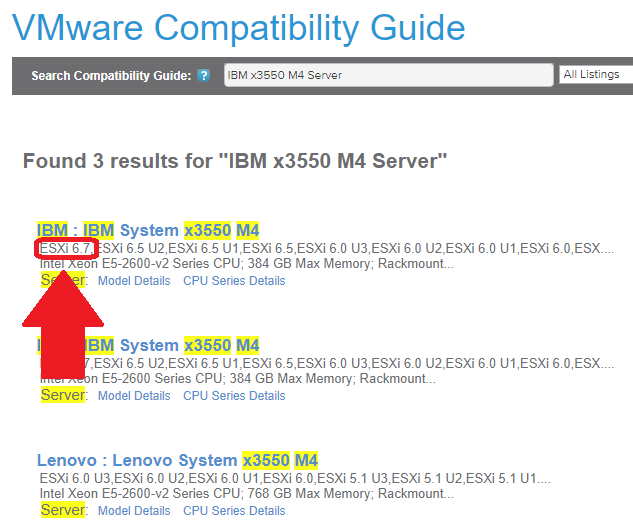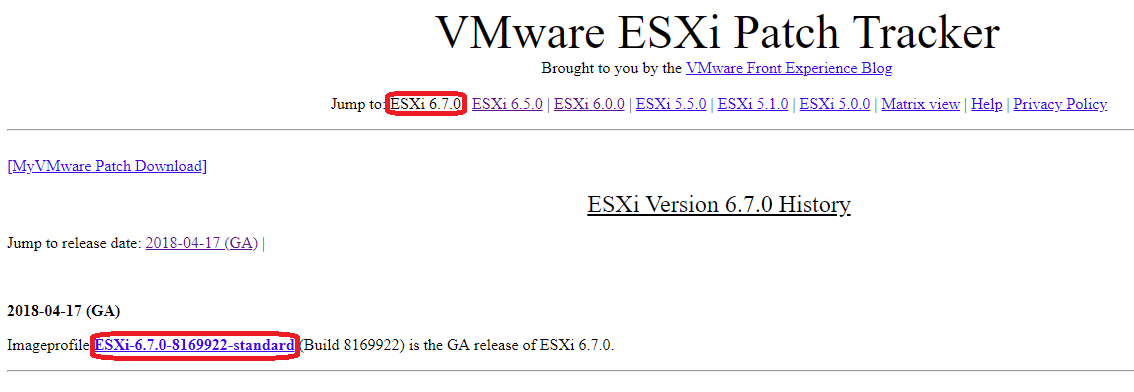In this article I will show you how to install ESXi Updates using ssh.
Checking the Compatibility
You have to check what version of the hypervisor is supported by the hardware you are running. You can do this using the Hardware Compatibility List or HCL.
Search for your server and check what versions are supported. In this case the server is a IBM x3550 M4.
If you have no physical access and are unsure what hardware the ESXi is running on, see if you can find an IMM or IDRAC in the network.

The screenshot above shows that the IBM x3550 M4 supports ESXi up to the current version 6.7. The Lenovo X3550 M4 on the other hand only supports up until ESXi 6.0.
Check the VM bootorder
Before patching the ESXi host make sure that the automatic start of VMs is in right order.
- What VM starts first? > DC / DNS? Radius? etc.
- Are intentionally turned off VMs maybe still in the autostart? > If so and the hypervisor is already running close to full capacity, turned off testing envoirements in the autostart can have you run into serious issues: > Worstcase could be a bootloop

Installing the ESXI updates
Installing the ESXi updates gets quite easy when using the Update-Commands provided by v-front. Select the ESXi Version (top page) that you want to update to and then select the imageprofile link of the release you want.

This opens up a Pop-Up with a Copy&Paste command for the CLI of the ESXi host.
**`# Cut and paste these commands into an ESXi shell to update your host with this Imageprofile
See the Help page for more instructions
esxcli network firewall ruleset set -e true -r httpClient
esxcli software profile update -p ESXi-6.7.0-8169922-standard
-d https://hostupdate.vmware.com/software/VUM/PRODUCTION/main/vmw-depot-index.xml
esxcli network firewall ruleset set -e false -r httpClient
Reboot to complete the upgrade`**
As you can see it sets a firewallrule, pulls the image from the official hostupdate.vmware.com resource and then sets the firewall rule again. We are going to need this one soon.
Now shut down all VMs that are running on this Hypervisor. (Please make sure that you have up2date backups of all the Machines BEFORE applying the upgrades)
Now connect via SSH and opaste the command above. Depending on your Internet Connection it is normal for the prompt to freeze for 30min or more, dont panic.
After you are on the commandline again reboot and the server will load the new image and start the upgrade process. This might take another 30min and might cause the server to reboot multiple times.
Once the Upgradeprocess is complete please check that all the VMs are starting correctly.
Cheers, Ori